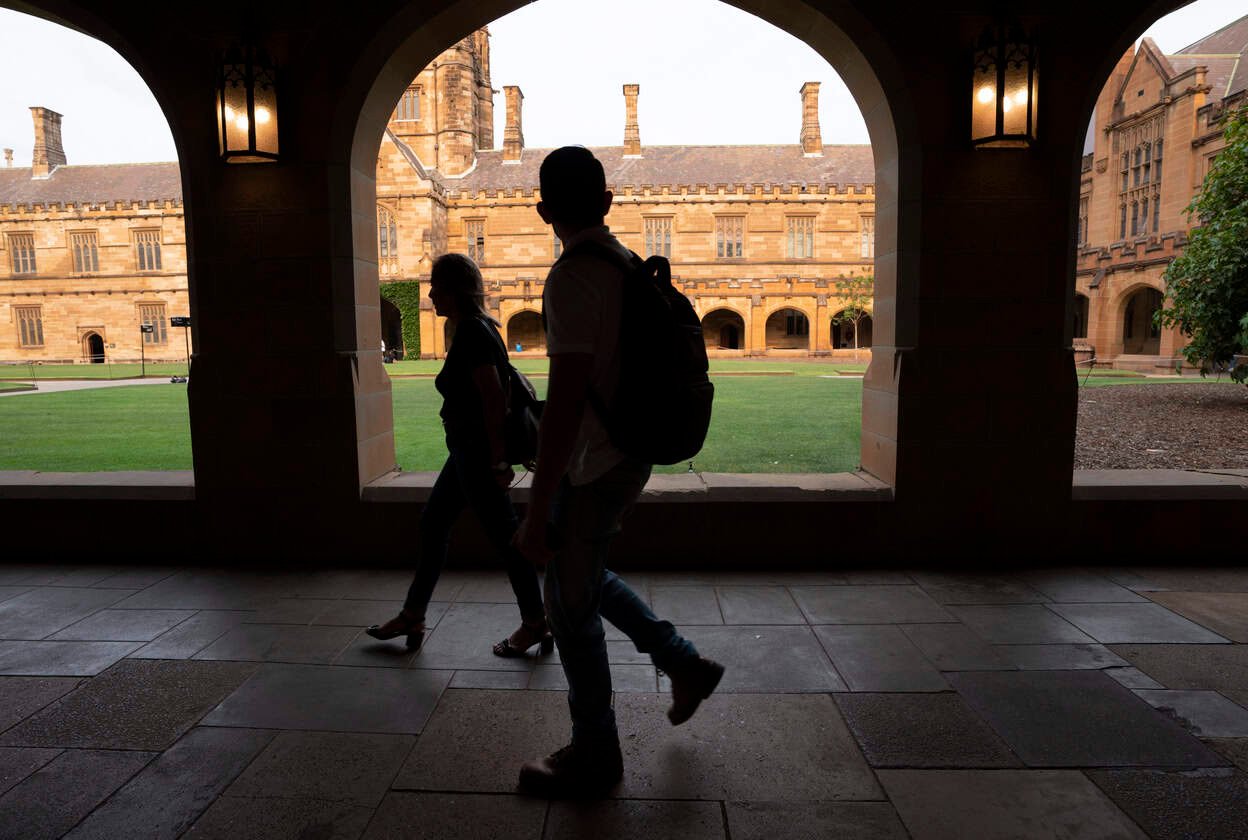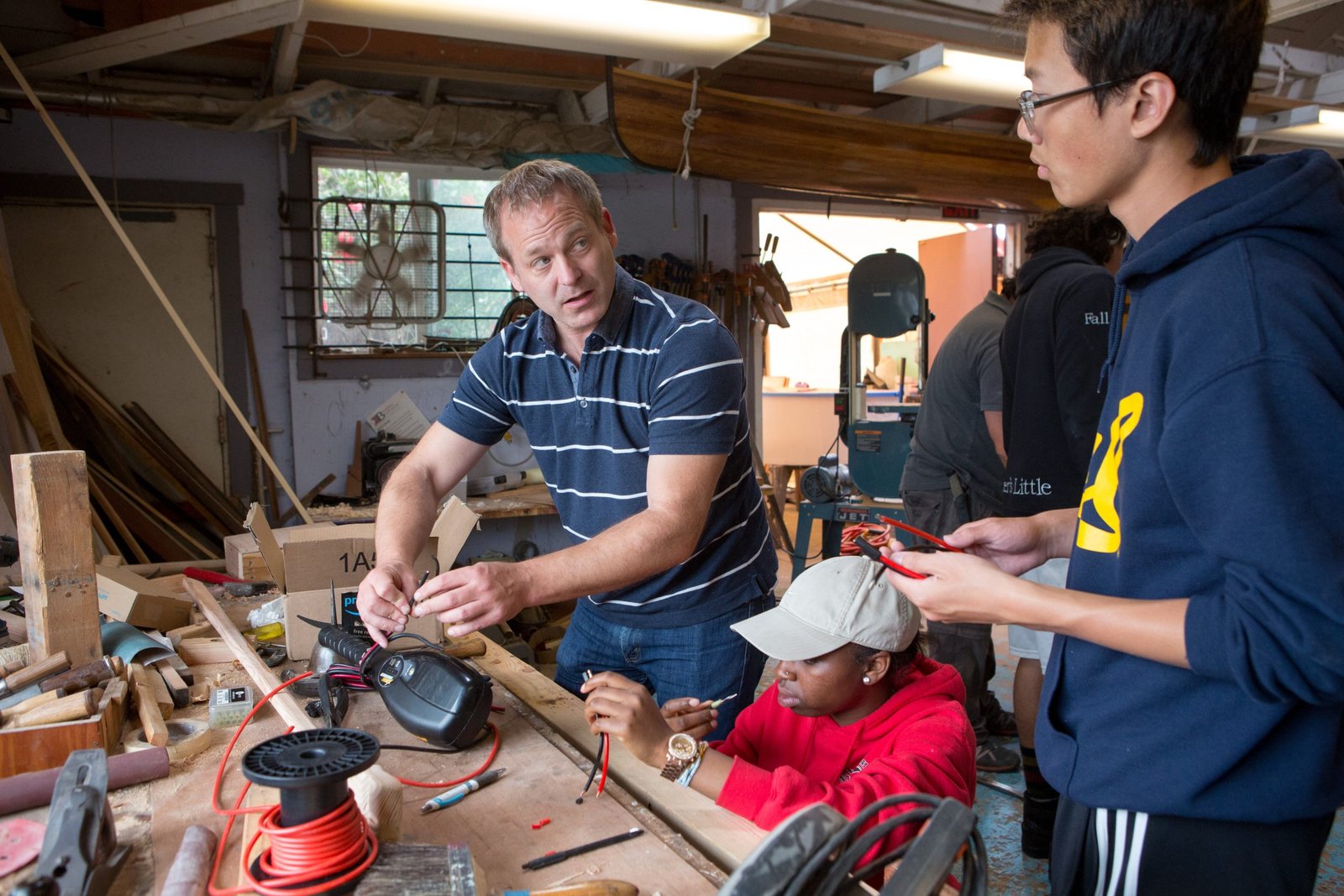Education
UK still top choice for pathway students despite policy changes

International students are placing getting a quality education over policy developments – with the UK keeping its spot as the preferred desitnation for 80% of nearly 1,000 pathway students surveyed by NCUK.
A new report covering the survey’s findings analyses data from 921 students across 88 countries studying an international foundation year or Master’s preparatino programs, looking at their motivations for studying in top destinations, as well as other preferences.
It found that Australia was the second most popular choice, with 4% of students surveyed marking it as their preference, followed by Canada, the US, New Zealand and Ireland at 3%. Meanwhile, the most coveted programs are business and computer science, as the preferred subjects for just under a third (31%) of respondents.
Students’ continued preference for the UK comes in spite of a slew of policy changes affecting international students. In May, the government unveiled its long-awaited immigration white paper, setting out the way Keir Starmer’s Labour party intends to tackle migration over the coming years.
It included plans to reduce the Graduate Route by six months to a total of 18 months, as well as new compliance metrics that higher education institutions must in order to continue recrutiing international students. Tougher Basic Compliance Assessment (BCA) requirements are set to take effect this month, meaning that universities will face penalties if more than 5% of their students’ visas are rejected, down from 10%.
And last September, the UK increased international student maintenance requirements for the first time since 2020. Under the new rules, students coming to London must show evidence of having £1,483 per month, while studying outside of London need proof that they have at least £1,136 per month.
But NCUK’s chief marketing officer Andy Howells pointed out that students are looking beyond arbitrary political decision when choosing their preferred study destination, thinking instead about their long-term prospects.
“This research demonstrates that international students are sophisticated decision-makers who look beyond political headlines to focus on educational quality and career outcomes,” he said. “While policy changes generate significant discussion in our sector, students are primarily motivated by the academic excellence and opportunities that institutions can provide.”
The survey found that, of a sample size of 646 students, just 12% who said they were considering studying in the UK said that financial requiremwnr increases would stop them from applying to UK instiutuons.
However, the popularity of other major study destinations were ore impacted by political headwinds, the survey found.
Over a third (36%) interested in applying the Australian institutions said that proposed international enrolment caps would affect their decision, while 26% of those looking to study in Canada said they would no longer apply to Canadian institutions over policy changes – particularly changes to the country’s postgraduate work permit scheme.
And almost four in 10 (38%) considering the US said Donald Trump’s second presidency would negatively impact their choice to study in America.
For the majority of students surveyed (69.9%), education quality is the primary driver leading them to seek study abroad opportunities, closely followed by enhanced career development opportunities (56.4%) and gaining new knowledge (55.2%).
The survey also shone a light on students’ post-graduation plans. Half of respondents said they wanted to stay in their study destination, with 31% planning to work and 19% looking at further studies.
This research demonstrates that international students are sophisticated decision-makers who look beyond political headlines to focus on educational quality and career outcomes
Andy Howells, NCUK
But a growing number of students plan to return to their hoe country immediately after graduating, with 23% saying they want to do this – up from 18% in last year’s survey.
Immigration has continued to be a hot topic in the UK as the anti-immigration Reform party grows in popularity.
Just earlier this week, Home Secretary Yvette Cooper drew ire from the international education sector after announcing that the government will be tougher on overseas students who make asylum claims that “lack merit” as a means to stay in the country after their visa expires.
Some 10,000 students have already been texted and emailed warning them that they will not be allowed to stay in the UK if they have no legal right to remain and explicitly warning them against making bogus asylum claims.
Education
Artificial intelligence is here to stay, so let’s teach it in class

Editor’s Note: This article was written for Mosaic, an independent journalism training program for high school students who report and photograph stories under the guidance of professional journalists.
As a 16-year-old high school student living in the Bay Area, I notice artificial intelligence being used around me daily. At my school, I’ve seen students submitting AI-generated work as their own, rather than taking the time to research, write and truly understand content.
Teachers see this and fear that students will go out in the real world and not know how to think critically without consulting a machine first. They see how it has already created an overreliance on shortcuts, weaker problem-solving skills and lower writing ability in their students. In response, many teachers have banned AI from their classrooms.
I’ll be honest: sometimes I use AI in school, too. By asking ChatGPT to help me explain the meaning of a piece of text or asking it to identify flaws in my writing, I intentionally use AI to help me learn. But when some of my peers use it to generate their entire assignments, it leads teachers to see any use of AI — whether it be productive or exploitative — as a lazy way to cheat, and it makes me feel guilty to use it at all.
It’s understandable why many educators feel this way, and researchers agree. For example, in a 2024 study published by the journal Societies, a sampling of 666 people showed that younger participants reported a higher use of AI tools but displayed lower critical-thinking skills.
However, AI isn’t going away. Other studies show that the use of AI in the workplace and in education is rising. A 2025 Gallup poll of U.S. employees showed those who frequently use AI multiple times a week nearly doubled, from 11% to 19% in two years. It’s only becoming more integrated in the world we live in, and without being taught AI literacy in school, the future feels uncertain.
Completely wiping AI out from classrooms doesn’t work in the long term, because students still find ways to move around it and misuse it for their assignments. It’s easy for them to adapt by using content humanizers like Bypass GPT or AIHumanize to avoid being detected. Banning it does not solve the problem.
A ban also erases the opportunities that AI can give students to do better in school. For example, an English teacher might have students generate an essay using AI, then have them critique its writing style and argument, or compare it to their own essay to identify areas that can be improved.
Khanmigo, an AI platform developed by Khan Academy, can give students more practice problems in math when they struggle with a particular concept, and can work with them to learn, rather than handing them answers.
This is a chance for educators to teach students how to use AI responsibly — not as a substitute for creative and critical thought, but as a tool to support them in academics instead. AI is still a developing technology that presents ethical issues, like its substantial environmental impact and potential biases that can be introduced by algorithms. It’s also known to not always be reliable for credible information and research.
But I rarely see these issues being discussed around me — it’s a missed opportunity for teachers to encourage digital literacy and for students to engage with a technology that will ultimately shape our world.
Sophie Luo is a member of the class of 2027 at Irvington High School in Fremont.
Originally Published:
Education
Equity report calls for overhaul of Australia’s higher education system

Launched as part of ACSES’ Australian Student Equity Symposium in Sydney, Equity Insights 2025: Policy, Power, and Practice for a Fairer Australian Tertiary Education System shares the views of vice-chancellors, policymakers, practitioners, and students, who examine why, despite substantial investment and effort, equity progress in Australian higher education remains modest.
Shamit Saggar, executive director of ACSES, said the purpose of the report is to shed light on the challenge of student equity, the responsibilities involved, and the progress being made.
“The report gathers 14 perspectives from key figures involved in higher education policy, university sector management, equity practice, student experience, and academic expertise. Each of these contributions reflects distinct elements of the task facing the sector,” said Saggar.
The report spans three themed sections: Rewriting the System: Policy, Structures and Reform; Power, Voice and Justice; and Making Equity Real: Practice, Place and Participation.
ACSES research and policy program director, Ian Li, said the report discusses the actions required across a broad range of areas. “It highlights both the systemic reforms required and the everyday practices that can make a real difference in the lives of students,” said Li.
[The report] highlights both the systemic reforms required and the everyday practices that can make a real difference in the lives of students
Ian Li, ASCES
The report argues that higher education is still shaped by entrenched class hierarchies, colonial legacies, and rigid divisions between vocational and university pathways, and that incremental reforms have not, and will not, deliver the impact required for the nation to meet the ambitious target of 80% tertiary attainment by 2050, with full parity for underrepresented groups.
Contributors also emphasise that cost-of-living pressures, housing stress, and mental health challenges are not peripheral concerns but central to whether students can complete their studies, and are just as important as reforming admissions or curriculum.
The longstanding divide between vocational education and universities was raised as a key issue, with calls for a harmonised system that allows students to move more easily between sectors and provides more flexible entry and exit points.
The report outlined measures to increase access for regional and remote students, including creating regional study hubs, tailored funding, and localised support outside metropolitan areas. It also called for leveraging the success of regional universities that already serve high proportions of equity students by using them as models for scaling equity.
Disability inclusion, meanwhile, must move beyond individual adjustments toward accessible curriculum and learning environments designed from the outset.
Indigenous contributors Leanne Holt and Tracy Woodroffe called for universities to move beyond transactional support and embed Indigenous leadership and cultural safety at every level of governance, teaching, and research.
Universities were also issued a warning that using AI and technology as a quick fix for equity risks widening the divide further. Instead, the report suggested equity must shape how AI is integrated through universal digital access, AI literacy, and student co-design.
The report also contained early insights from the new National Student Ombudsman, launched in February 2025, revealing strong demand for independent complaint resolution, especially on course administration, wellbeing, and financial issues. Sarah Bendall, who leads the office as First Assistant Ombudsman, argues this is proof that accountability must become a sector-wide priority.
While each section of the report contains unique perspectives and experiences, the overall message of Equity Insights 2025 is not simply to do more, it is to do differently, and it calls for bold leadership across the entire sector.
Education
NAEP scores show we need new approaches, more resources and all hands on deck to address underlying education problems

America’s future is not made in factories or innovation labs — it’s forged in classrooms. We can’t bring good jobs back to U.S. shores if we don’t first educate a workforce capable of doing them. The latest National Assessment of Educational Progress, or NAEP, known as the Nation’s Report Card, paints a grim picture, with test scores down since 2019 for eighth graders in science and 12th graders in math and reading.
The lowest-performing learners lost the most ground, leaving large percentages of students unable to perform the strong academic work required for postsecondary life. Only about 1 in 5 high school seniors scored at the NAEP Proficient level in math. That puts them at a terrible disadvantage since STEM positions make up a growing percentage of the workforce. Nearly half were working below even the NAEP Basic level, meaning they likely don’t know how to use percentages to solve real-world problems.
This isn’t the first bad report card we’ve seen since the pandemic upended learning five years ago, but progress in American education has generally been stalled for at least a decade. Leaders at every level need to stop using the pandemic as an excuse and start looking for solutions. There have been times in the past when Republicans and Democrats have come together around education. While that may be difficult to do today, it’s needed more than ever.
Related: A lot goes on in classrooms from kindergarten to high school. Keep up with our free weekly newsletter on K-12 education.
We need new approaches, more resources and all hands on deck to help students develop the knowledge and skills to thrive in an increasingly complicated world. The teens who took the 12th grade tests are now out of school. They’re facing a workforce disrupted by AI and demanding more from them — not less. Even young people who opt not to go to college, such as those looking to work in manufacturing, for example, need more advanced STEM and literacy skills than in the past.
There are some areas of educational progress around the country we can learn from. For example, Indiana is remaking the American high school experience to personalize it and connect it to the world of work, while Rhode Island is reinvigorating career and technical education to embed it with more rigor and ensure it provides an on-ramp to an array of postsecondary options, including college.
We can also expand on the reforms that are taking root in elementary education. An emphasis on the research behind teaching children to read, sometimes referred to as the science of reading, is effective. And states like Mississippi and Louisiana, leaders in this movement, have seen strong literacy gains. We can apply that kind of evidence-based approach across K-12 subjects and grades.
It’s also vital to listen to what students are saying. Fortunately, the Nation’s Report Card can help with this.
Survey data accompanying the eighth grade science assessment suggests that inquiry-based learning is in decline. Fewer students say they’re spending time on things like designing experiments to answer research questions. That kind of instruction helps students build science knowledge and develop key skills like the ability to think critically and to collaborate with peers, exactly the kind of skills that AI can’t replace.
Related: Nation’s Report Card at risk, researchers say
The best instruction has a purpose for learning, explores real-world problems and makes connections to work. Most states have passed science standards that promote this kind of instruction, but more resources are needed to get aligned materials into schools and provide teachers with the training to use them effectively.
Getting kids out of the classroom helps too. I invited elementary school students to my farm in western Massachusetts a few years ago and vividly recall a fourth grader’s aha moment, finally understanding decimals when collecting 2.25 inches of rain in a vial. It was a terrific example of how interdisciplinary science is and how powerful it is in experiential learning settings.
It’s true that science resources, such as lab materials, can be expensive; however, schools can tap into community partners and business leaders for assistance. In Massachusetts, for example, General Electric has helped bring mobile technology labs into schools.
One thing I am grateful for, even amid all this bad education news, is the high-quality data shining a light on the problems we’re facing. There are too many voices today calling for a rollback of testing. That’s a mistake. Obtaining meaningful data, such as that found on the Nation’s Report Card, is crucial. Of course, what we do with it matters even more.
It has been 42 years since American leaders from across political parties and sectors came together to bring attention to “A Nation at Risk,” a landmark report that spurred significant education reforms. And it’s been 36 years since 49 governors came together and defined the state role in K-12 schooling.
After these milestones, the nation saw sustained progress on NAEP. We need that same leadership now.
Republican Jane Swift is a former governor from Massachusetts who serves on the National Assessment Governing Board, which oversees the Nation’s Report Card. She is also the CEO of Education at Work, a nonprofit that connects college students with work-based learning opportunities.
Contact the opinion editor at opinion@hechingerreport.org.
This story about NAEP scores was produced by The Hechinger Report, a nonprofit, independent news organization focused on inequality and innovation in education. Sign up for Hechinger’s weekly newsletter.
-

 Business2 weeks ago
Business2 weeks agoThe Guardian view on Trump and the Fed: independence is no substitute for accountability | Editorial
-
Tools & Platforms4 weeks ago
Building Trust in Military AI Starts with Opening the Black Box – War on the Rocks
-

 Ethics & Policy1 month ago
Ethics & Policy1 month agoSDAIA Supports Saudi Arabia’s Leadership in Shaping Global AI Ethics, Policy, and Research – وكالة الأنباء السعودية
-

 Events & Conferences4 months ago
Events & Conferences4 months agoJourney to 1000 models: Scaling Instagram’s recommendation system
-

 Jobs & Careers2 months ago
Jobs & Careers2 months agoMumbai-based Perplexity Alternative Has 60k+ Users Without Funding
-

 Education2 months ago
Education2 months agoVEX Robotics launches AI-powered classroom robotics system
-

 Podcasts & Talks2 months ago
Podcasts & Talks2 months agoHappy 4th of July! 🎆 Made with Veo 3 in Gemini
-

 Education2 months ago
Education2 months agoMacron says UK and France have duty to tackle illegal migration ‘with humanity, solidarity and firmness’ – UK politics live | Politics
-

 Funding & Business2 months ago
Funding & Business2 months agoKayak and Expedia race to build AI travel agents that turn social posts into itineraries
-

 Podcasts & Talks2 months ago
Podcasts & Talks2 months agoOpenAI 🤝 @teamganassi





















